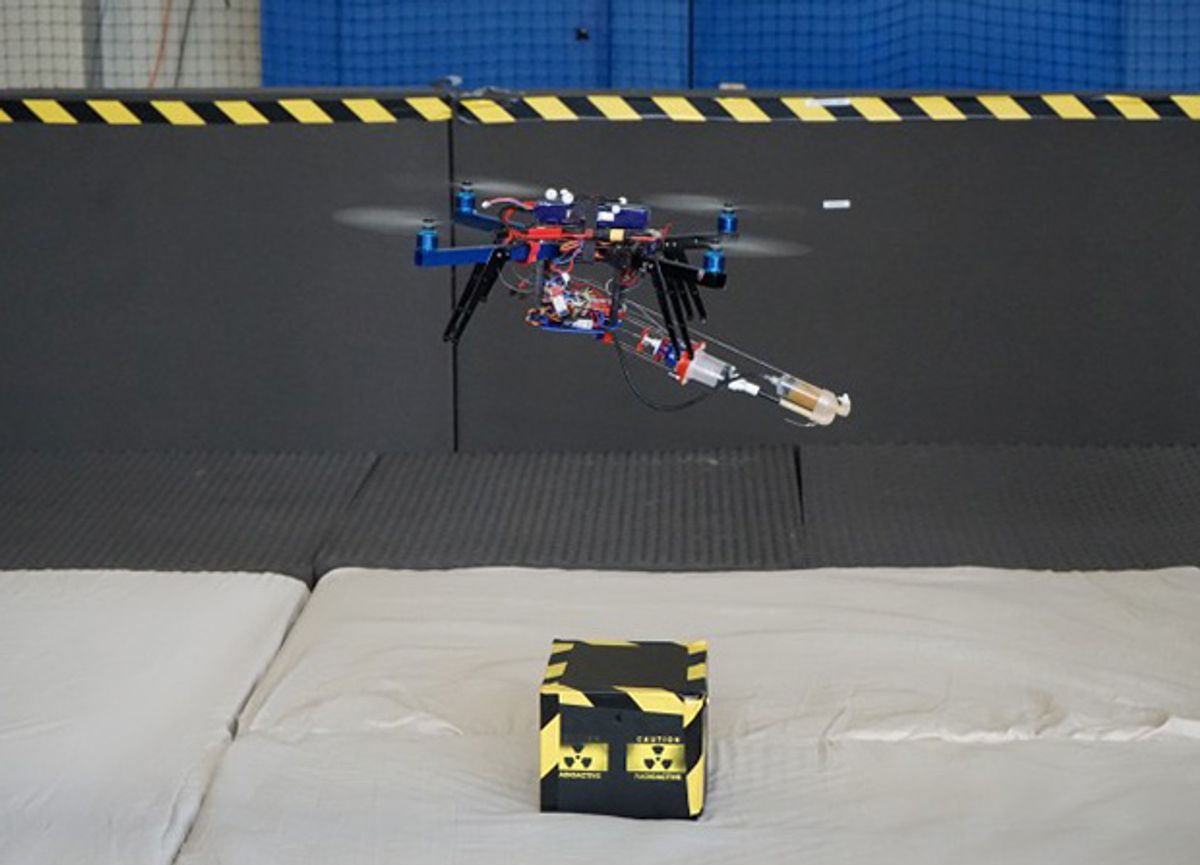This week's Video Friday is going to be a little bit light, probably because a lot of the people who normally post cool stuff (students and research labs) are feverishly working on their PowerPoint presentations ahead of ICRA 2014, which kicks off in just a few Fridays from now.
This lull usually happens before a major conference, although we always get caught up (and then some) with videos as soon as the conference opens. Our preliminary schedule has just over 150 talks on it, and that's not including workshops, plenary talks, lunch talks, and a special "Pecha Kucha Night of Robotics" that looks like a lot of fun. So for a taste of what's to come, today's first video is a preview of an ICRA talk.
Using mobile robots for construction is a concept that we've only just started to see being explored in research environments. Dr. Mirko Kovac has taken this idea airborne, with a quadcopter equipped with a foam dispenser that can be used to build or repair structures:
These robots were inspired by swiftlets, which are birds that use their saliva to manufacture nests (which, incidentally, you can eat). The foam that the robots put down can repair cracks, works as glue, and can also be piled on top of itself additively, which allows the quadcopter to act as a sort of coarse, flying 3D printer. All of this currently takes place in a controlled motion-capture environment, but the idea is to transition to onboard sensors, and send the robots out to perform maintenance tasks in areas that are too dangerous (or too far) for humans to get to.
[ Imperial College London ] via [ New Scientist ]
Mirobot is the latest in a series of very cool, very simple and inexpensive robotics kits for kids (and inexperienced adults) that have done quite well on Kickstarter. What makes Mirobot unique is its physically open design (which encourages assembly by kids), its ability to draw whatever it does to help illustrate what you program it to do, the fact that it can be accessed via Wi-Fi: it forms its own access point.
Mirobot is already well over 200 percent funded, but you can still get your hands on one for US $85, while contributing towards some interesting stretch goals that include collision detection, line following, and audio output.
[ Mirobot ]
Thanks Ben!
ABB dropped one of their big robots arms in the middle of Frankfurt for the Luminale Festival, and got it to start "dancing a lone dance with a light wand and roof."
[ ABB ]
The 2014 SeaPerch Challenge will be held at the University of Southern Mississippi starting on May 17, and it'll probably go something like this:
[ SeaPerch ]
One of the major potential markets for telepresence robots is in elder care, helping people stay at home and independent (and happier) longer than they might be able to otherwise. It's easy to speculate about the effectiveness of this, but it's way better to see how well it works in practice, with a GiraffPlus telepresence robot in the home of a 94-year-old Italian writer.
Via [ Robohub ]
Team BlackSheep went to Dubai to get some aerial drone footage of 800 HP dune buggies:
[ Team Blacksheep ]
You remember RoboEarth, right? Gajan Mohanarajah has an update on the Internet for robots in the form of a TEDx Talk:
[ RoboEarth ]
We'll sign off this week with some very well choreographed magic from the duo of Marco Tempest and his Baxter:
Marco Tempest uses charming stagecraft to demo EDI, the multi-purpose robot designed to work very closely with humans. Less a magic trick than an intricately choreographed performance, Tempest shows off the robot's sensing technology, safety features and strength, and makes the case for a closer human-robot relationship. (Okay, there's a little magic, too.)
[ Marco Tempest ]
Evan Ackerman is a senior editor at IEEE Spectrum. Since 2007, he has written over 6,000 articles on robotics and technology. He has a degree in Martian geology and is excellent at playing bagpipes.



